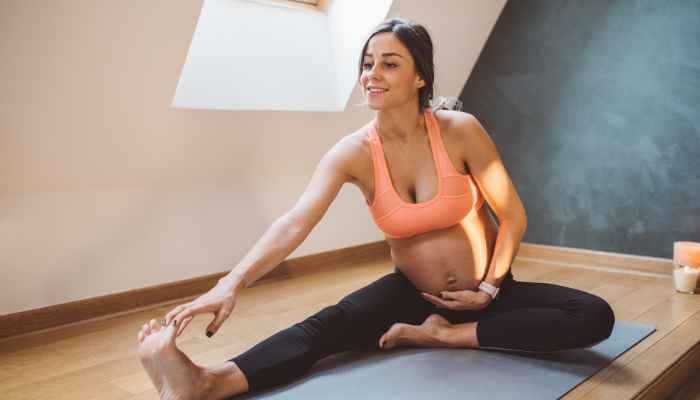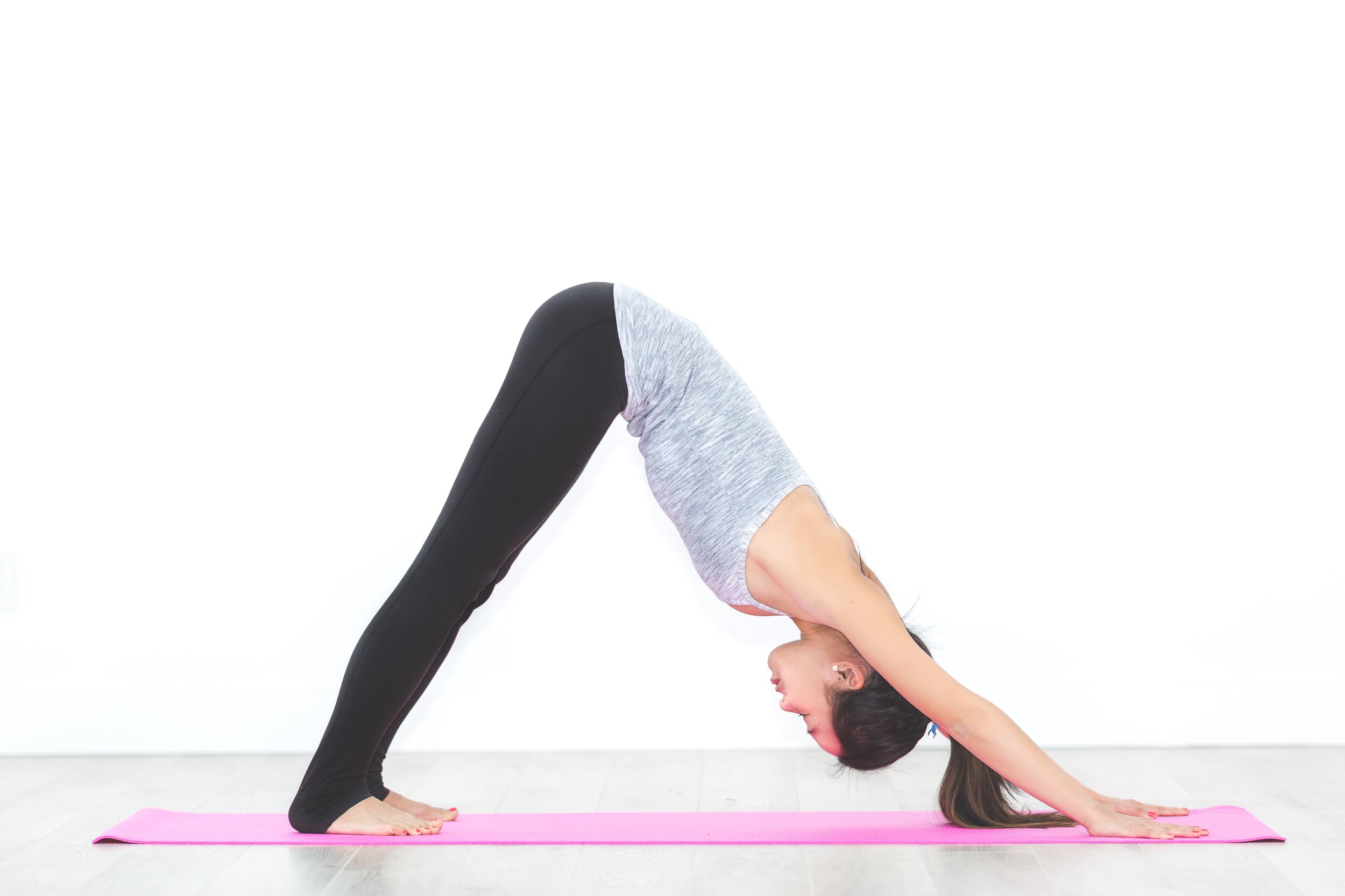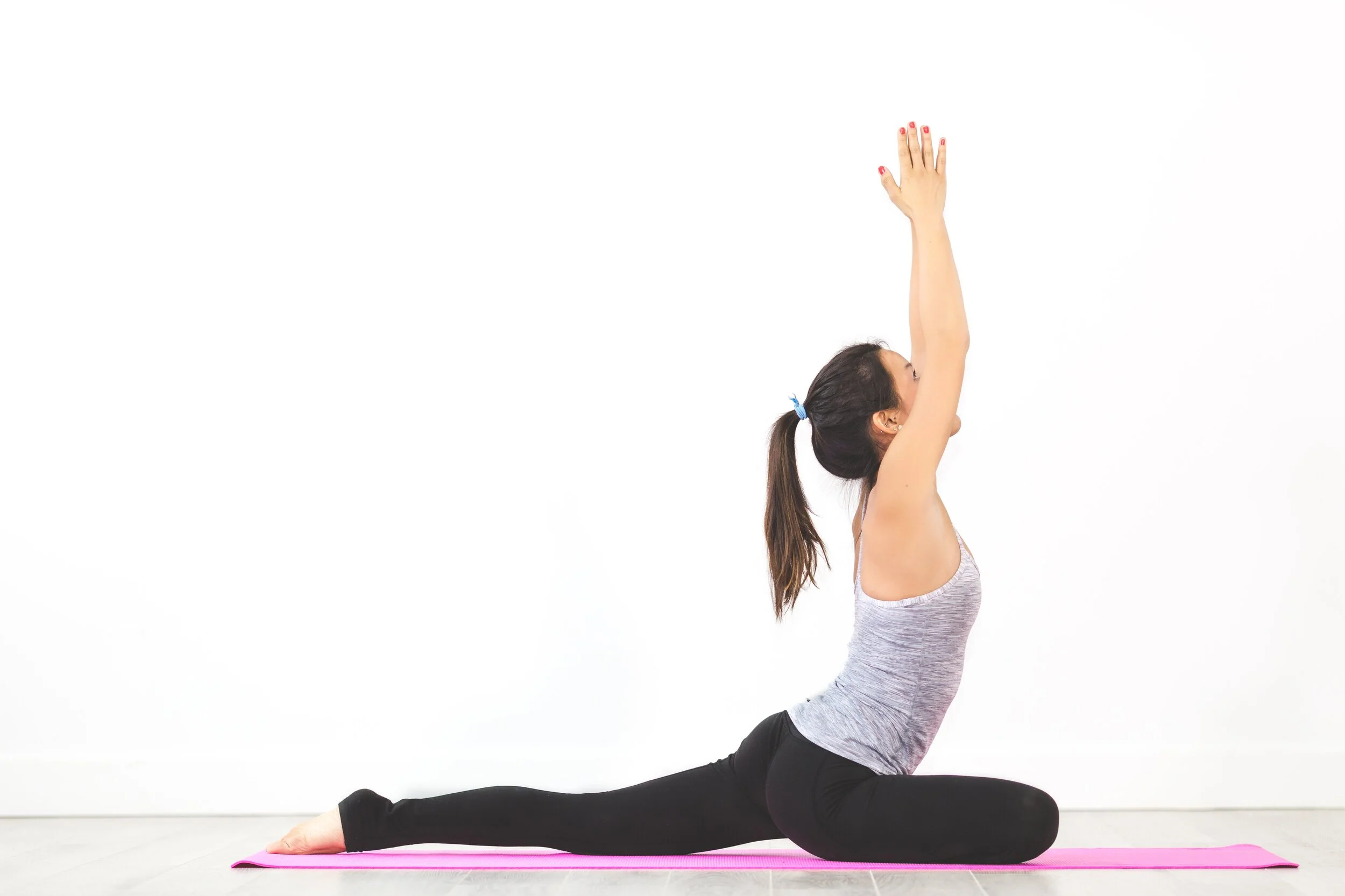Yoga In Pregnancy: How To Do It Right & Our Top 5 Poses
Reviewed May 2022
Let's get to the main question: is yoga really safe during pregnancy? The short answer is yes! The longer answer is yes, as long as you take the right precautions and know which poses are best suited to your changing body. That's where we come in! We've got the top 5 steps to take before starting prenatal yoga and our 5 favorite moves for your baby bump days so you can nail those asanas and work on your pranayama (for any beginners out there this guide to yoga lingo will be your best mate). Also - in the spirit of healthier living, check out our favorite phthalate-free, latex-free yoga mat here!
Now if you're rocking a third-trimester baby bump, we're sure the thought of even trying to touch your toes is laughable. But yoga isn't all about crazy flexibility or those impossible-looking inversions (p.s. you probably don't need us to tell you that your center of gravity changes and balancing becomes much harder than it used to be, so make sure you know how to do inversions properly!). Your prenatal yoga practice is really all about maintaining good muscle tone and strength, channeling energy and breathing into one, and helping to relieve aches and pains with gentle, focused stretching. It's as much of a wellbeing practice as it is a fitness practice - giving you time and space to tend to yourself and your body.
5 top tips on what to keep in mind when starting a prenatal yoga practice:
It's always a good idea to chat with your doctor about your planned exercise routine at your first prenatal appointment - just so you can discuss any pre-existing conditions or complications that might impact your workouts.
If you go to any classes, make sure your instructor knows you are pregnant and is trained in prenatal yoga.
Remember relaxin! That lovely little hormone that makes your ligaments loosey-goosey so baby has room to grow also makes you more prone to over-stretching and potential injury. Keep any stretches to 90% capacity or less to avoid this.
Water, water, water. During any prenatal exercise, you'll want a bottle of water on hand to stay hydrated. This is just as true for your yoga practice.
Make sure you feel comfortable and well balanced through all of your flows and poses. If anything hurts or makes you feel dizzy or off-balance, stop right away.
There are so many yoga poses that are fantastic to do while pregnant. That said, there are some moves you'll want to refrain from until after birth. The main types of poses to avoid are ones that require: twisting motions of the abdomen, lying on your back for extended periods of time, and putting pressure or compression on your abdomen - such as lying on your stomach or folding over too far. Now that that's out of the way, onto the good stuff!
Top 5 yoga poses for pregnancy
Again, these 5 yoga moves aren't the only yoga poses you should be doing with prenatal yoga practice - there are so many that are good for you! But these are 5 simple moves you can do at home, and each one alleviates some of the common aches, pains, and symptoms of pregnancy.
1. Downward Dog:
For a while, pregnant women were advised to avoid Downward Dog, especially later in pregnancy. But a recent study published in Obstetrics & Gynecology found that this pose is well tolerated and deemed safe when done properly and under observation. It gives you the benefits of inversions without actually being an inversion, by encouraging blood flow to the brain, which is thought to improve moods and relieve mild depressive feelings. Plus it can release tension in the lower back by elongating the spine.
2. Pigeon Pose:
This pigeon pose variation is suited for pregnancy because it doesn't require folding over (as in extended pigeon) nor does it require twisting of the abdomen (as in king pigeon pose); but you'll still get all the hip opening benefits! Make sure to keep your hips even, and use a pillow under your hip if needed for extra support. The variation below with arms extended will help stretch your hip flexor if you're feeling tight in that area, but you can also leave your arms down at your sides if more comfortable.
3. Wide-Legged Child's Pose:
Ahh, who doesn't love child's pose? The wide-legged version is perfect to make room for your growing baby (and growing bump). This pose is great to work on breathing control during rest periods, which proves helpful once labor contractions kick in! It will also help open up your hips and stretch your back, and this extended position is good for opening the chest as well.
4. Butterfly Pose:
Another hip opener for you! This pose will stretch your hips and thighs and is believed to be an important stress-relieving pose. It's also thought to help encourage good digestion, so if pregnancy hormones have you a bit backed up, it might help things move along. Also, once you get closer to baby's due date, this pose will be great to encourage good positioning for birth as well as baby's engagement into the birth canal.
5. Upward Salute:
This pose is a serious winner when it comes to alleviating pregnancy symptoms. It encourages the opening of the chest and creates space in the front body, which can reduce feelings of anxiety and fatigue, help with nausea and heartburn, and make it easier to breathe - which is especially welcome if you're dealing with breathlessness. Keep in mind that moves where you have your arms overhead for an extended period of time can make you dizzy due to a change in blood pressure - so it's best to do this stretch in 12-second increments, or the time it takes for 2 deep breaths. Of course, if you do feel dizzy or lightheaded doing this pose, stop right away.
Show us your prenatal yogi style! Post a photo on Instagram and tag @baby2bodyofficial for a chance to be featured on our page!
Want more fitness tips and exercises for a healthy pregnancy and fourth trimester? Check out the Baby2Body app!






